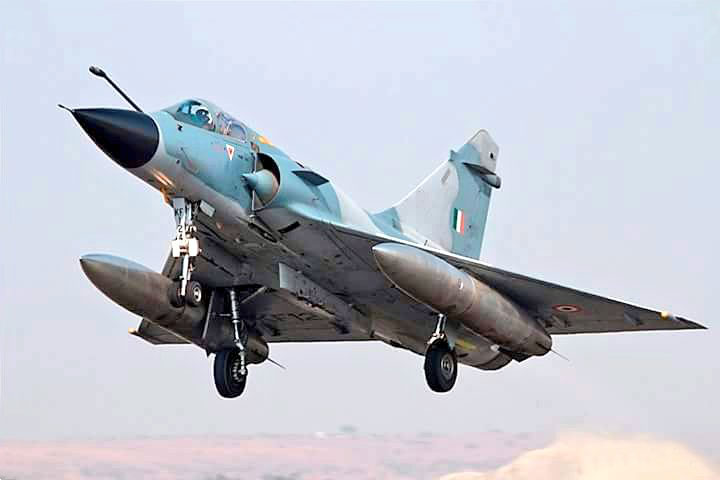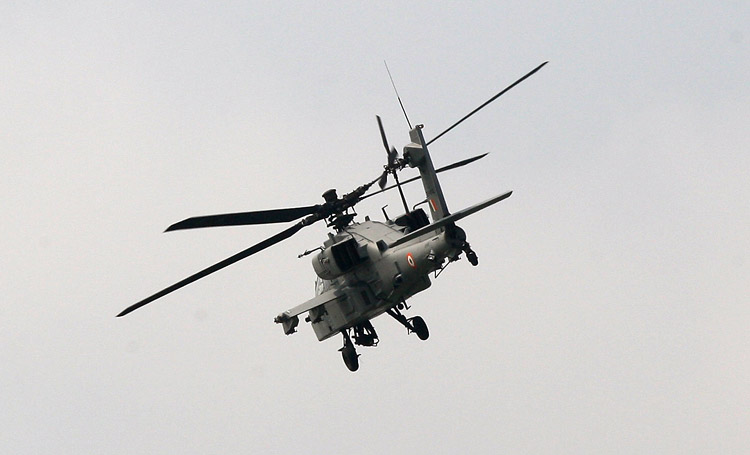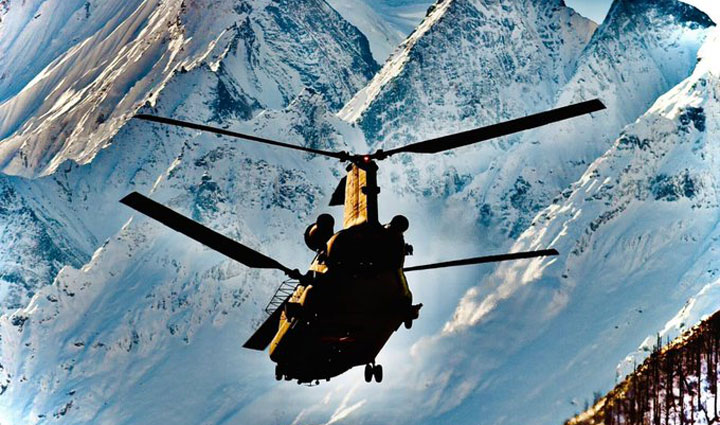INDIAN ARMED FORCES CHIEFS ON OUR RELENTLESS AND FOCUSED PUBLISHING EFFORTS

The insightful articles, inspiring narrations and analytical perspectives presented by the Editorial Team, establish an alluring connect with the reader. My compliments and best wishes to SP Guide Publications.

"Over the past 60 years, the growth of SP Guide Publications has mirrored the rising stature of Indian Navy. Its well-researched and informative magazines on Defence and Aerospace sector have served to shape an educated opinion of our military personnel, policy makers and the public alike. I wish SP's Publication team continued success, fair winds and following seas in all future endeavour!"

Since, its inception in 1964, SP Guide Publications has consistently demonstrated commitment to high-quality journalism in the aerospace and defence sectors, earning a well-deserved reputation as Asia's largest media house in this domain. I wish SP Guide Publications continued success in its pursuit of excellence.
- The layered Air Defence systems that worked superbly, the key element of Operation Sindoor
- Operation Sindoor | Day 2 DGMOs Briefing
- Operation Sindoor: Resolute yet Restrained
- India's Operation Sindoor Sends a Clear Message to Terror and the World – ‘ZERO TOLERANCE’
- Japan and India set forth a defence cooperation consultancy framework, talks on tank and jet engines
Indian Air Force in action along the LAC
As the focus now has to shift from the Western to the Northern border, the IAF has been conducting regular air exercises and combat air patrol missions along the LAC.
 |
The Author is Former Air Officer Commanding-in-Chief of Training Command, IAF |

It was a little over two decades ago that the Indian Air Force (IAF) had the opportunity to prove its operational prowess during the conflict with Pakistan in Kargil in the year 1999. However, the missions undertaken by the combat aircraft of the IAF to knock out a number of vital camps and installations of the enemy in the mountainous region of Kargil, were totally unopposed by the Pakistan Air Force (PAF) probably because all the targets struck were on the Indian side of the border. Operationally, these missions were thus relatively less challenging for the IAF as there were no combat aircraft of the PAF to take on while attacking the enemy positions on the ground.
The situation prevailing at this time on the Northern front is somewhat different from that experienced by the IAF in Kargil. The recent developments along the Line of Actual Control (LAC), the not-so-clearly demarcated border between India and China in the Ladakh region, that on the night of June 15 this year, escalated into a conflict between the soldiers of No 16 Battalion of the Bihar Regiment of the Indian Army and those of the People’s Liberation Army (PLA) of China deployed in the area. This conflict resulted in significant number of fatalities on both sides and since then, the situation along the LAC has become tense with both India and China embarked on preparation for a possible conflict on a larger scale.
As the IAF is now on the cusp of a wider conflict with the possibility of at least a limited war if not a full scale war with the armed forces of China, it has placed its forces on a high state of alert. Consequently, the IAF has set into motion the process of redeployment of its combat squadrons as well as the newly acquired fleet of AH 64E Apache attack helicopters. Having been involved in the four wars that the Indian Armed forces have fought with Pakistan since independence and only one with China in 1962 in which the IAF was not involved, the approach of the three services, especially that of the IAF, has been somewhat Pakistan-centric. However, with the recent developments along the LAC, there has been a change in the security scenario on the Northern front that is of relevance to all the three services. To cope with the new situation, the IAF therefore will need considerable reorientation of its operational paradigms which will involve strengthening of the airbases in Jammu and Kashmir (J&K), Punjab as well as in the Eastern sector.

The IAF has already undertaken extensive redeployment of its combat elements to meet with newly emerging challenges. Apart from the focus on strengthening the infrastructure at the airbases, pilots will need considerable reorientation to move away from being Pakistan-centric and focus on the dynamics of the newly emerging threat from the enemy in the North. Pilots also need to be familiarised with the varied and mountainous terrain over which they would be required to fly operational missions and strike ground-based targets as also engage aircraft of the People’s Liberation Army Air Force (PLAAF). Fortunately, the Government of India has given full freedom to the Indian Armed Forces to deliver appropriate response to any aggression by the Armed Forces of China and has assigned them the responsibility to be geared up to meet with any contingency that may arise in the future.
The Chinook heavy lift helicopter has been carrying out regular missions related to logistic support to the ground forces involving heavy loads.
As per the latest information available, even though efforts are on through dialogue to diffuse the situation, air activity along the LAC has certainly increased as the IAF has made some significant moves to be prepared for war. It has placed on a high state of readiness all its air bases that it may need to operate from as well as redeployed some its front line combat squadrons equipped with Su 30 MKI air dominance fighters, Mirage 2000 deep strike aircraft and MiG 29 multi-role combat aircraft. Since the redeployment of the combat fleets, for proper reorientation of its fighter pilots whose focus now has to shift from the Western to the Northern border, the IAF has been conducting regular air exercises and combat air patrol (CAP) missions along the LAC. However, the combat aircraft engaged in air exercises, remain at least 10 km from the LAC on the Indian side. This is a No-Fly Zone on either side of the LAC that both the IAF and the PLAAF are expected to honour.

Fighter aircraft of the IAF also avail of the opportunity to carry out practice landings at forward airfields at high altitudes such as the one at Leh, a major commercial hub of Ladakh and the largest city in the district. Combat aircraft of the PLAAF such as the J 10 and J 11 fourth generation fighter aircraft, are similarly active on their side of the LAC. Even though satellite imagery of the areas of possible conflict is available to the IAF, its combat aircraft capable of reconnaissance, are also being tasked for missions regularly to keep an eye on the movements and redeployment by the ground forces of the enemy as well as activities in the air by the aircraft of the PLAAF. Unmanned Aerial Vehicles (UAVs) are also being flown to augment intelligence information on the enemy.

Apart from the combat fleet, the newly procured rotary-wing platforms by the IAF from the American aerospace major Boeing of the United States such as the AH 64E Apache attack helicopters and the CH 47 Chinook heavy lift helicopters have also been deployed. Like the fixed-wing combat platforms mentioned above, the Apache fleet has also been carrying out regular training sorties in the area to familiarise and train pilots for operations in the mountains to attack and destroy enemy targets especially armoured formations if any. The Chinook heavy lift helicopter has been carrying out regular missions related to logistic support to the ground forces involving heavy loads.
While all possible options are being pursued by the Government to de-escalate the situation and prevent an all out war with China, for the IAF, its redeployment and engaging in aerial activity has essentially been an opportunity for “Show of Force”.





